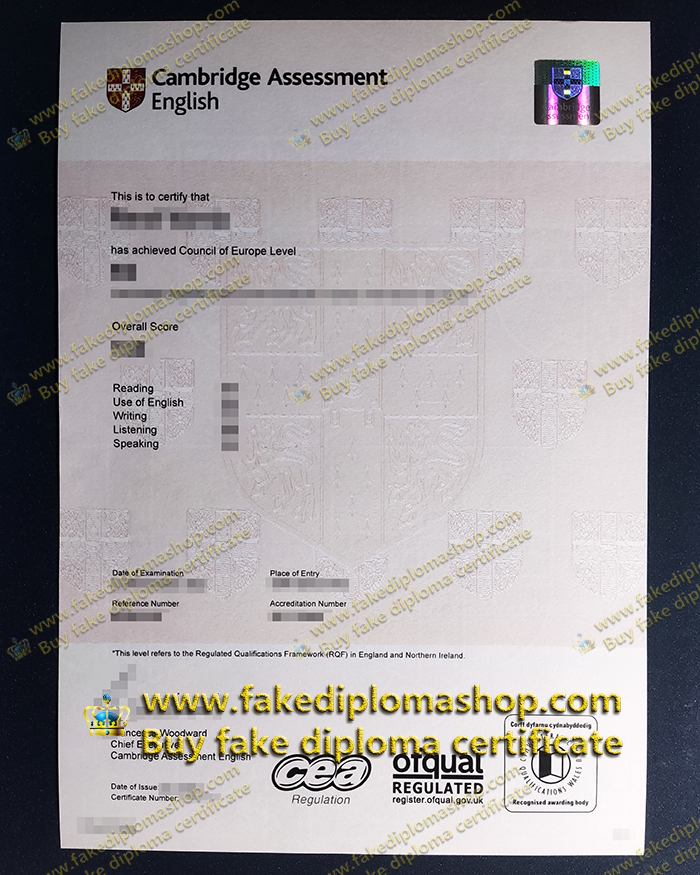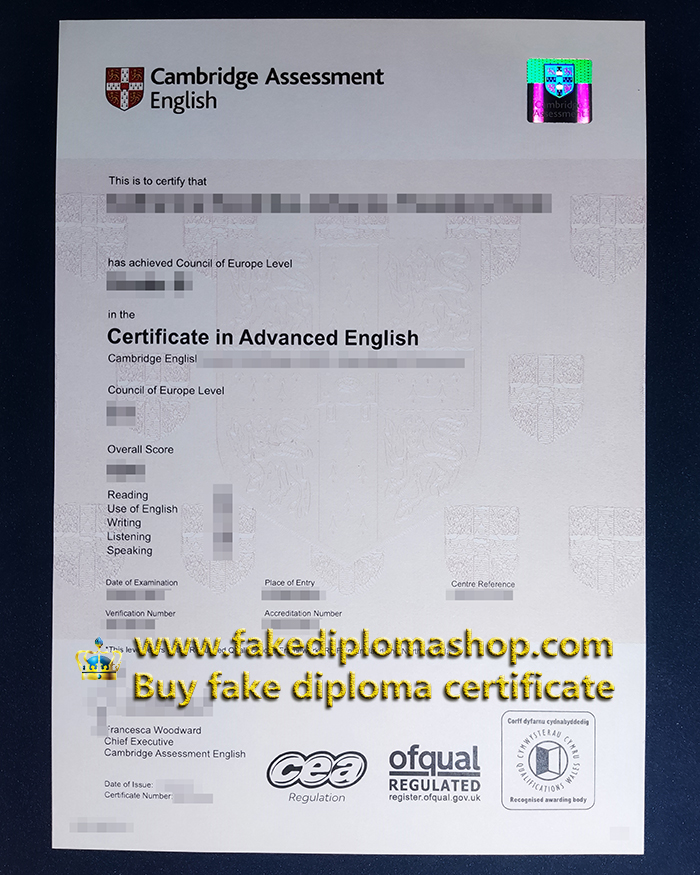
CAE Level B2 certificate, Cambridge Assessment English certificate of B2
How much to buy a fake CAE Level B2 certificate online? Where to find a fake diploma maker to order a CAE Level B2 certificate? Where to buy a fake Cambridge Assessment English certificate for a better job? Purchase a CAE fake certificate of Level B2 online, order a fake Level B2 certificate from Cambridge Assessment English, high quality Cambridge certificate for sale. Cambridge Assessment English or Cambridge English develops and produces Cambridge English Qualifications and the International English Language Testing System (IELTS).
The organization has contributed to the development of the European Common Framework of Reference for Languages (CEFR), which is used around the world to measure language skills, with qualifications and tests aligned with CEFR levels. UCLES has made some attempts to develop different levels of language assessment. During the Second World War, there was a three-tier system: the Primary English Test, the LCE, and the CPE. After the war, a new three-tier system was introduced: LCE, CPE and DES (Diploma in English Learning). However, as an extremely advanced exam, the DES never had more than a few hundred candidates and was later disqualified.
During the 1980s and 1990s levels levelled off and the set of exams, we recognize today was established. A Level 5 system was developed, which represents Cambridge English’s general English examination to date and lays the foundation for the level of the CEFR.
- Level 1: Key English Test (KET) was introduced in 1994. Now it’s called A2 Key.
- Level 2: The Primary English Test (PET) was originally used during World War II. It reappeared under close surveillance in 1980 and was fully activated in the 1990s. It is now known as the B1 Heats.
- Level 3: LCE, which has been in use since the Second World War and continues to exist under a new name: English First Certificate. It is now known as B2 First.
- Level 4: Certificate in Advanced English (CAE) was introduced in 1991. Now called C1 advanced.
- Level 5: CPE, in operation since 1913, is the highest qualification in Cambridge English. It is now known as C2 proficiency.
During this time, significant changes have also been made to the existing exams: B2 First and C2 Proficiency. These include improving the authenticity of texts and tasks; Increase the weight of listening and speaking; Improve the balance between grammar and vocabulary items in reading papers; And to add a wider range of texts to the writing and use of English papers (e.g., letter writing, dialogue, speech, note-taking, and discourse and descriptive works).

Cambridge Assessment English C1 certificate, Cambridge English Level 2 certificate
As the proportion of listening and speaking increased, UCLES joined forces with the BBC. In the BBC’s recording studios, however, there was a contradiction between the BBC’s approach to dramatic potential and UCLES ‘need for clear speech. For example, a person sliding down a hill is fun, but not acceptable for testing purposes. It was eventually agreed that at least 35 percent of the listening tests would include original BBC recordings, mainly made up of programs from the World Service and Women’s Hour radio.
With learners increasingly requiring English language certification to study, UCLES, together with the British Council and the Australian International Development Program (IDP), developed a test specifically for English for academic purposes in the 1980s.
The English Language Testing Service (ELTS) test was first introduced in 1980 and its task is based on the use of language in academic and vocational Settings in the “real world”. However, ELTS testing is complicated to administer and only two full versions have been made.
In 1989, a simplified and shortened test began operating under a new name: the International English Language Testing System (IELTS).
Obviously, the different forms of testing need to be equated. Therefore, all IELTS materials were pre-tested and uniformly calibrated against the Rasch model. This was the first time that UCLES used the Rasch model, which now forms the cornerstone of the level testing system.

